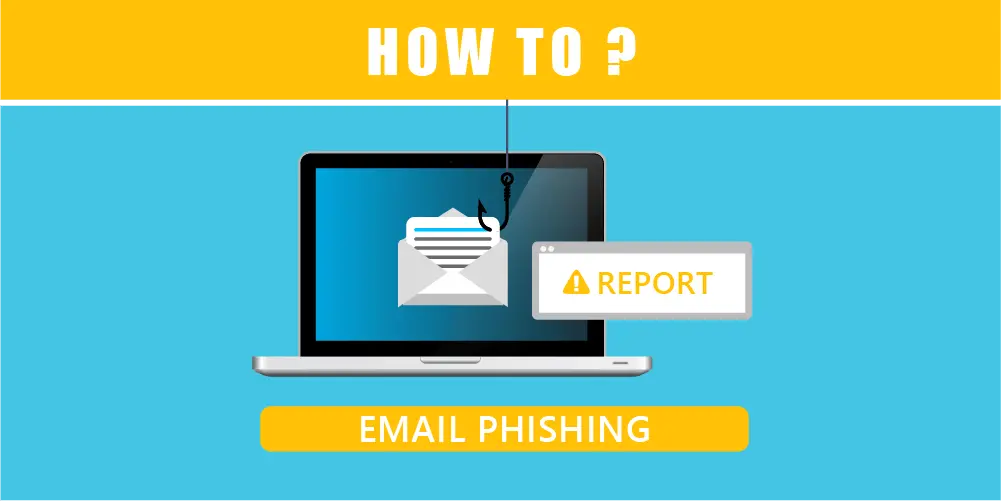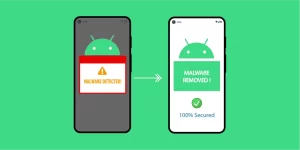Introduction
Phishing is not the least harmful or harmless threat to an internet user, but it frequently has a more menacing sense than other types of cybercrime. Something is disconcerting about an attacker controlling your life and completely ruining your day with something as commonplace as an email. You can take steps to be secure online, but social engineering means phishing may still pose a real threat, even if you have the best protection software and cutting-edge technology. Let us discuss the ways to report Email phishing in this article
Table of Contents
Email phishing: What is it?
Phishing is a sort of internet fraud in which thieves pretend to be reputable companies via email, text messages, advertisements, or other channels in order to get sensitive data. This is typically accomplished by inserting a link that will appear to send you to the business’s website so you can enter your information, but the website is really a deceptive imitation, and the data you enter is sent directly to the con artists behind the scam.
The phrase “phishing” is a play on the word “fishing,” since thieves employ a fraudulent “lure” to entice victims into giving those sensitive data like credit card numbers, account numbers, passwords, usernames, or other important information, by posing as a legitimate-looking email, website, or advertisement.
ALSO READ: Phishing Attacks and Its Prevention
How to file a report if you encounter email phishing.
Reporting phishing emails can take many different forms depending on a few variables. Law enforcement and the firm that is being impersonated should both get reports of any phishing emails you receive, but it also helps to notify your email providers so that they may utilize the information to filter for those emails automatically.
The easiest of the three alternatives is frequently to report phishing emails to your email provider, so let’s start there and examine how to report phishing emails to Gmail and Outlook.
How to alert Gmail of phishing emails
Gmail is by far the most widely used email service provider, and for a good reason—it has over 1.5 billion users. It is a compelling bundle, offering a free account and a ton of clever inbox filters. Gmail works to block or flag hazardous emails as part of the package before they get to your inbox. In the event that a well-written phishing email manages to get past the filters, you may report it from your inbox to help Google improve the filter.
When you open a phishing email, do the following actions to report it to Gmail:
- Navigate to Options by clicking the three dots next to the replay button.
- To begin the report and see the confirmation pop-up, choose Report phishing from the Options menu.
- Review the implications of reporting the email to Google in the report confirmation pop-up, and then choose Report Phishing Message to confirm your report.
You are limited to reporting phishing from your desktop since there is no direct mechanism to do so through the Gmail client for mobile devices as of this writing. Snooze the email, so you get a reminder when you come home if you get a phishing email while you’re out and about and want to report it. However, in such a situation, you might be better off blocking the email and marking it as spam.
How to alert Outlook of phishing emails
Like Gmail, Outlook offers email filters that are designed to shield users from potentially unwanted emails. There are two ways to use the report function in Outlook, but the procedure is identical if you wish to report a phishing email to aid in the training of those filters.
Open the phishing email and do the following actions to begin reporting it:
- Click the Security settings option from the drop-down menu after selecting the three dots next to the Reply and Forward buttons in the email reader.
- Choose Mark as phishing from the Security settings drop-down to display the report confirmation pop-up.
- Select report to report the email as phishing in the confirmation pop-up.
- You may also choose the phishing option from the drop-down menu next to the report choices in the top bar to get the confirmation box in step 3 instead.
How to alert law enforcement and regulatory organizations about phishing emails
It can be tedious and conceivably pointless to report phishing to law authorities. However, there is a growing awareness of online fraud and cybercrime, so it is a good idea to use those methods when they are accessible.
- You may submit phishing emails and information about the experience to the Anti-Phishing Working Group at [email protected] on a worldwide scale. The APWG gathers information and trends regarding phishing and transmits the lists of phishing sites it has compiled to the appropriate authorities. Sending a suspicious email to the APWG as an attachment is preferable to forwarding it.
- You may report fraud through the FTC’s reporting system in the United States.
- Send phishing emails to the National Cyber Security Center at [email protected] if you’re in the U.K.
- Phishing and fraud reports are handled in Canada by the Canada Anti-Fraud Centre. You can contact the CAFC by phone at 1-888-495-8501 or online through the Canadian Royal Mounted Police.
How to alert a company that is the target of a phishing effort to questionable activity
When phishers send out emails pretending to be from a company, it’s simple to understand how this might harm the reputation of the company. You are less inclined to believe a legitimate email from Amazon in the future if you have already received a dubious one. To aid the company and—more importantly—other less tech-savvy people who could get the email and fall for the phishing scheme—it is worthwhile to report phishing activities.
Websites like Amazon, Google, Microsoft (and any of its Office applications), PayPal, and banks are frequently utilized in phishing scams. Customers can contact any of these businesses to report phishing or other fraudulent activities, typically by email.
How to alert Amazon about phishing attempts
Depending on how much the user’s personal information was compromised, Amazon has a support page dedicated explicitly to phishing and offers assistance to consumers with phishing reports. To report an email, you can, at the very least, forward it to [email protected]. Depending on what information you supplied to the phishers, you should follow the instructions on the support page if you unintentionally fell for an Amazon-spoofing phishing attempt.
How to alert Microsoft about phishing attempts
Spoofing Microsoft emails, advertising improved services, or technical help are common phishing techniques. You can forward an email that contains a known Microsoft phishing attempt as an attachment to [email protected]. You may submit reports via the submission site if you have a Microsoft 365 account. To file an issue via the portal, you must be an admin, which is much more effort.
How to alert PayPal about phishing
The PayPal refund scam, which aims to steal credit card details and access your cash, is one of the most popular phishing efforts. By alerting PayPal to phishing schemes, people may help PayPal become aware of the problem and be protected. Send the entire email to [email protected] to report a PayPal phishing attempt. It’s a good idea, although not necessarily essential, to remove the email from your inbox as well, as PayPal suggests.
How to inform your local bank about phishing
The unique bank will choose how to report phishing and scams, but generally speaking, banks provide a fraud or security line you may call to get information or report fraud activities. Therefore, your initial action should be to call your bank and heed their recommendations. As an alternative, you can inform your local law authorities about any phishing efforts, as previously mentioned.
ALSO KNOW: Top 10 Tech and Cybersecurity News Daily
Four Strategies to Guard against Phishing
Many phishing emails could be blocked by your email spam filters from reaching your inbox. However, spam filters are always being outsmarted by fraudsters, so adding further levels of security might be helpful. Here are four methods for defending against phishing scams.
1. Use security software to shield your machine. Set the program to automatically update so that it can respond to any new security risks.
2. Set software updates to occur automatically to protect your mobile device. You may receive important security threat protection from these upgrades.
3. Make use of multi-factor authentication to safeguard your accounts. Multi-factor authentication is the term for this. The additional information you require to access your account is divided into three categories:
- An answer to a security question, a passcode, or a PIN that you know.
- Security key or a two Step verification passcode that you get via SMS, email, or authenticator app.
- something about you, such as a scan of your face, retina, or fingerprint
Even if the Scammer got his hands on your credentials. The multi-factor authentication will make it difficult for scammers to access your account.
4. Make a backup of your data to protect it. You should back up your Device’s data to the cloud platforms or an external hard drive. Additionally, back up the info on your phone.
Conclusion.
Cybercriminals will continue to take advantage of individuals online as long as there are people who can be exploited. Knowing the risks of using the internet is the safest thing you can do as a user. To avoid being a victim of scammers, you should take the time to read emails and web information. Another action you can do to make the internet a little less hospitable to those who wish us harm is to report phishing and online fraud.












One Response